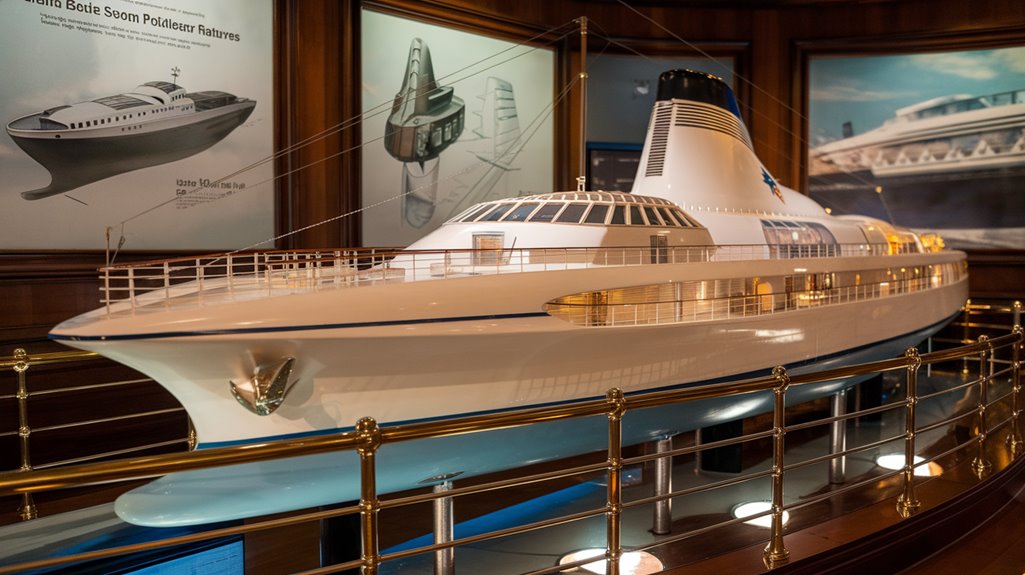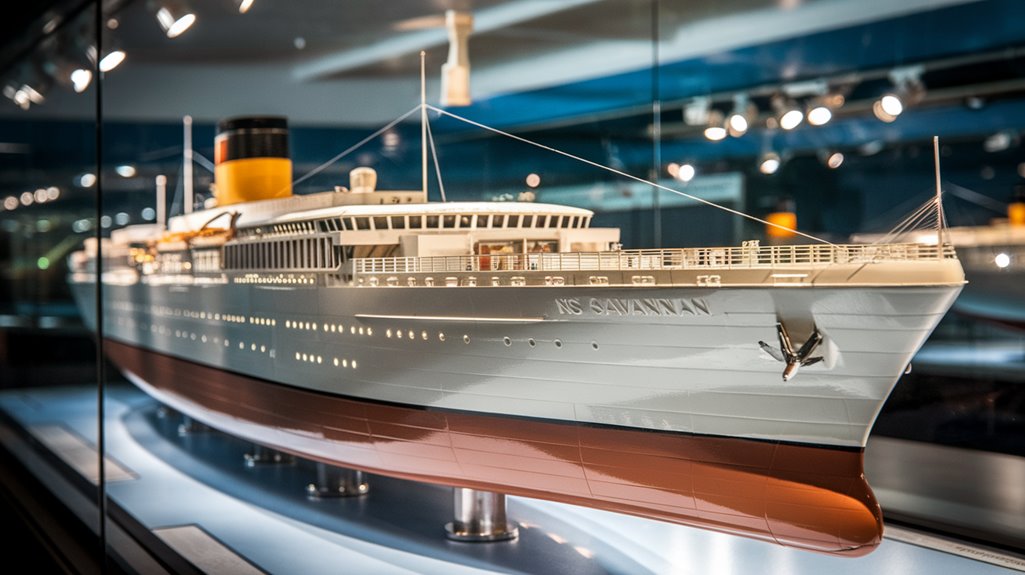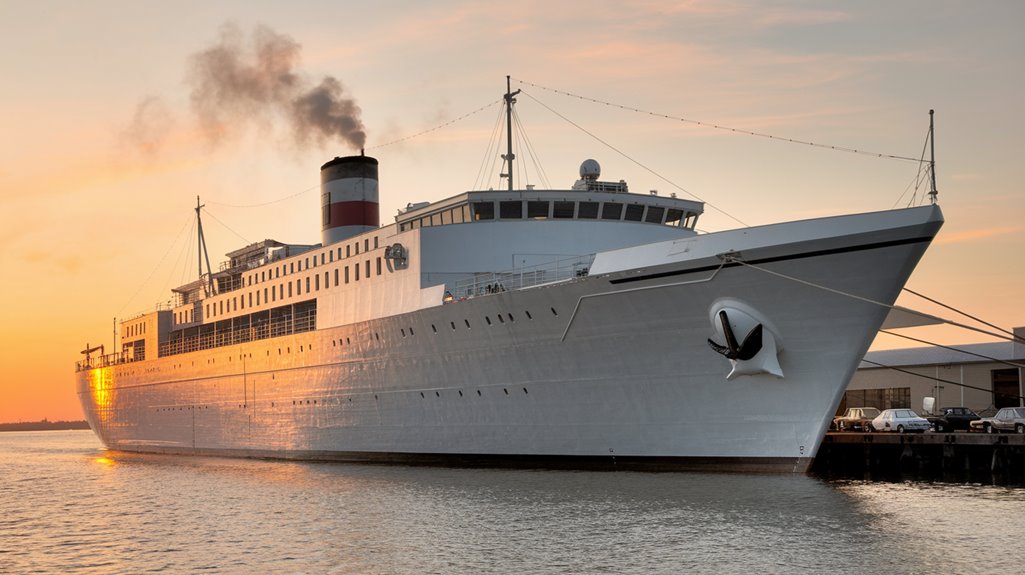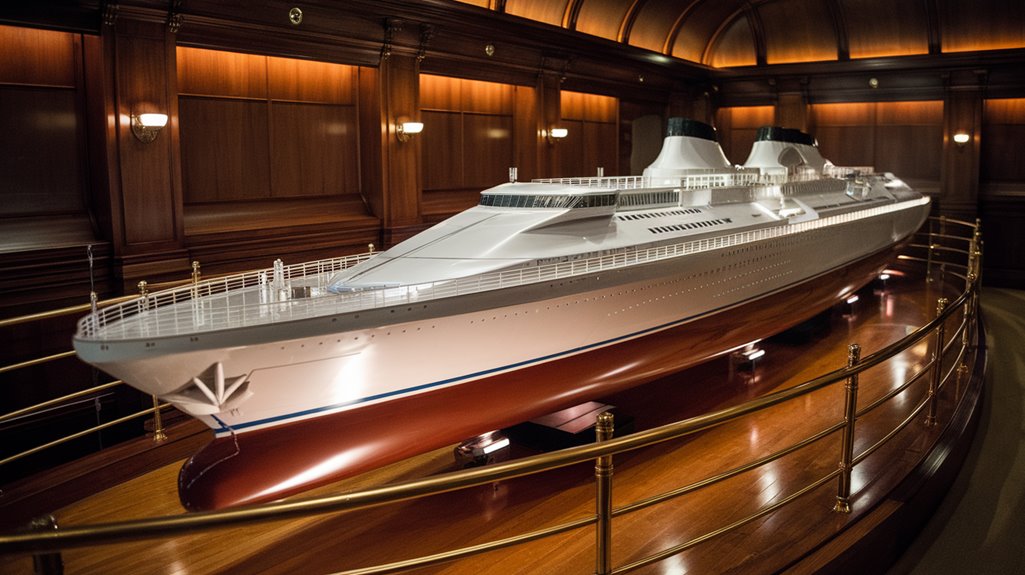Atomic Cruise Ships: The Future That Never Happened
While you might think atomic-powered ships were merely science fiction, they've actually sailed our oceans. In the optimistic aftermath of World War II, you'd have found engineers and maritime experts seriously planning for a future where nuclear-powered cruise ships would revolutionize sea travel. They weren't entirely wrong about the technology's potential – after all, nuclear submarines still patrol our waters today. But the story of why these civilian vessels never caught on reveals an intriguing tale of ambitious dreams colliding with cold reality.
The Nuclear Dream: Post-WWII Maritime Ambitions

In the wake of World War II, as the world grappled with atomic energy's destructive power, visionaries began exploring its peaceful applications in maritime technology.
Passenger ships like Savannah utilized advanced nuclear reactors to pioneer this new frontier.
The nuclear enthusiasm of the 1960s sparked ambitious dreams of vessels that could traverse oceans without refueling, powered by mere pounds of uranium instead of massive oil reserves.
Leading this maritime innovation was the U.S. Navy, with Captain Hyman Rickover spearheading the development of nuclear-powered submarines. The N.S. Savannah demonstrated this vision with its ability to circle the globe using just 35 pounds of uranium.
The USS Nautilus's successful launch in 1955 proved nuclear propulsion wasn't just a fantasy.
This breakthrough inspired several nations, including the Soviet Union, France, and Japan, to pursue their own nuclear maritime projects.
You'll find it fascinating that these early successes convinced many that atomic-powered cruise ships would become the standard for commercial shipping, promising both economic and environmental benefits.
The Saga of NS Savannah: America's Nuclear Pioneer
Among the most ambitious ventures in nuclear maritime history, the NS Savannah emerged as America's pioneering nuclear-powered merchant ship.
Equipped with impressive cargo capabilities, the vessel could transport 9,400 tons of cargo while maintaining exceptional performance.
Launched in 1959 as part of Eisenhower's "Atoms for Peace" initiative, Savannah's design featured a 74 MW pressurized-water reactor protected by extensive shielding and a unique collision mat. The ship measured an impressive 596 feet in length, making it a substantial vessel for its time.
You'd be amazed by the ship's dual role as both a floating laboratory and passenger vessel.
While it operated from 1962 to 1972, the Savannah's nuclear propulsion system proved technically successful but economically challenging.
When oil prices were under $3 per barrel in 1971, the project was deemed uneconomical.
Today, you can explore this historic vessel through docent-led tours, including visits to its technicolor control rooms, while its reactor has been safely removed and disposed of in 2022.
Britain's Unrealized Vision: The P&O Nuclear Ship Project
Britain's ambitious dream of nuclear-powered passenger ships emerged during the early 1960s when the Macmillan government allocated £3 million to design an atomic ocean liner.
This bold venture in maritime technology aimed to mirror P&O's Canberra's design, featuring a white hull and aluminum superstructure.
Despite the promise of nuclear innovation, several factors doomed the project:
- Growing public concerns about radiation exposure
- Operational challenges witnessed in NS Savannah
- Major ports' refusal to handle radioactive waste
- The declining economic viability of transatlantic travel
- Technical complexities in reactor design selection
The NS Savannah demonstrated these challenges clearly when it discharged 115,000 gallons of radioactive waste in its first year of operation.
You'll find it interesting that while naval nuclear propulsion succeeded with vessels like USS Nautilus, commercial applications proved far more challenging. The success of military nuclear vessels was exemplified when the USS Nautilus achieved a remarkable first transpolar voyage under the North Pole in August 1958.
Safety and Environmental Hurdles in Nuclear Maritime Travel
While nuclear propulsion revolutionized military vessels, its application in commercial shipping faces substantial safety and environmental challenges.
You'll find that nuclear-powered commercial ships present unique risks absent in military vessels, particularly due to their thinner hulls and limited security measures.
Safety protocols for these vessels would need to address multiple concerns, from potential terrorist attacks and hijacking threats to radiation exposure risks for crew members. The U.S. Navy's remarkable zero nuclear accidents record demonstrates the strict protocols needed for safe nuclear maritime operations.
The environmental impact of a nuclear accident at sea could be catastrophic, as waterborne contamination is extremely difficult to contain.
Historical incidents, like those involving Soviet vessels, have demonstrated the severe consequences of nuclear maritime accidents.
These challenges, combined with strict international regulations and persistent public skepticism, create significant hurdles for the commercial adoption of nuclear-powered ships.
The Economic Reality Behind Atomic Passenger Ships

Despite the impressive energy density advantages of nuclear power over traditional fuels, the economic realities of atomic passenger ships present a complex picture.
Nuclear power enables zero emissions during operation, making it an environmentally responsible choice for the cruise industry. When you examine nuclear economics in maritime applications, you'll find that modern shipping innovations like Small Modular Reactors could actually make financial sense over a 30-year period. Producing enough green hydrogen for shipping would require 2.7 times more power than the EU's entire 2022 electricity production.
Key factors shaping the economic viability:
 multi-paradigm modeling approaches help integrate complex systems, nuclear propulsion represents a sophisticated merger of multiple engineering disciplines.
multi-paradigm modeling approaches help integrate complex systems, nuclear propulsion represents a sophisticated merger of multiple engineering disciplines.
You'll find that nuclear propulsion thrived in military applications due to its unique advantages: extended operational range, elimination of fuel storage needs, and enhanced combat capabilities. The success story began with the historic USS Nautilus launch in 1954, setting the stage for decades of military nuclear excellence.
Naval vessels could remain at sea longer and carry more military payload, making them strategically superior.
Yet these same technologies couldn't overcome the hurdles in commercial shipping.
The combination of high costs, safety concerns, and public fear of radiation made atomic-powered passenger ships economically unfeasible.
The required infrastructure investment and environmental risks further sealed their fate in commercial markets.










